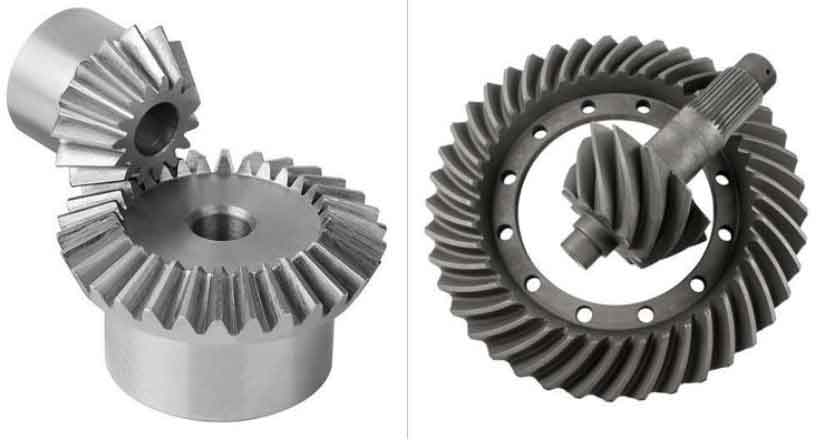When choosing between straight bevel gears and spiral bevel gears, there are several factors to consider. Both gear types have their advantages and disadvantages, and the right choice depends on the specific application and requirements. Let’s compare them in terms of key characteristics:

- Tooth Contact and Efficiency:
- Straight Bevel Gears: In straight bevel gears, the teeth make contact along a line perpendicular to the gear axis. This results in point contact, causing higher stress and noise levels. Consequently, straight bevel gears have lower efficiency compared to spiral bevel gears.
- Spiral Bevel Gears: Spiral bevel gears have curved teeth that gradually engage and disengage, resulting in a more gradual and distributed tooth contact. This provides smoother operation, reduced noise, and higher efficiency compared to straight bevel gears.
- Load Capacity:
- Straight Bevel Gears: Straight bevel gears typically have a higher load-carrying capacity due to the larger contact area between the teeth. They are commonly used in heavy-duty applications where high torque and ruggedness are required.
- Spiral Bevel Gears: Although spiral bevel gears have a smaller contact area, their tooth engagement is distributed along the length of the tooth, allowing them to handle higher speeds and accommodate misalignments better. They are suitable for applications where smooth operation and precision are important.
- Noise and Vibration:
- Straight Bevel Gears: The point contact and sliding action of straight bevel gears can generate more noise and vibration during operation, especially at higher speeds.
- Spiral Bevel Gears: The gradual engagement and larger contact area of spiral bevel gears help reduce noise and vibration, resulting in smoother and quieter operation.
- Manufacturing Complexity and Cost:
- Straight Bevel Gears: Straight bevel gears are simpler in design and easier to manufacture compared to spiral bevel gears. They generally have a lower production cost.
- Spiral Bevel Gears: Spiral bevel gears are more complex to design and manufacture due to the curved tooth profile. This complexity often leads to higher production costs.
In summary, the choice between straight bevel gears and spiral bevel gears depends on the specific application requirements. If high load capacity, ruggedness, and cost-effectiveness are crucial, straight bevel gears may be preferred. On the other hand, if smooth operation, higher efficiency, and reduced noise levels are important, spiral bevel gears are a better choice, despite their higher manufacturing costs.
